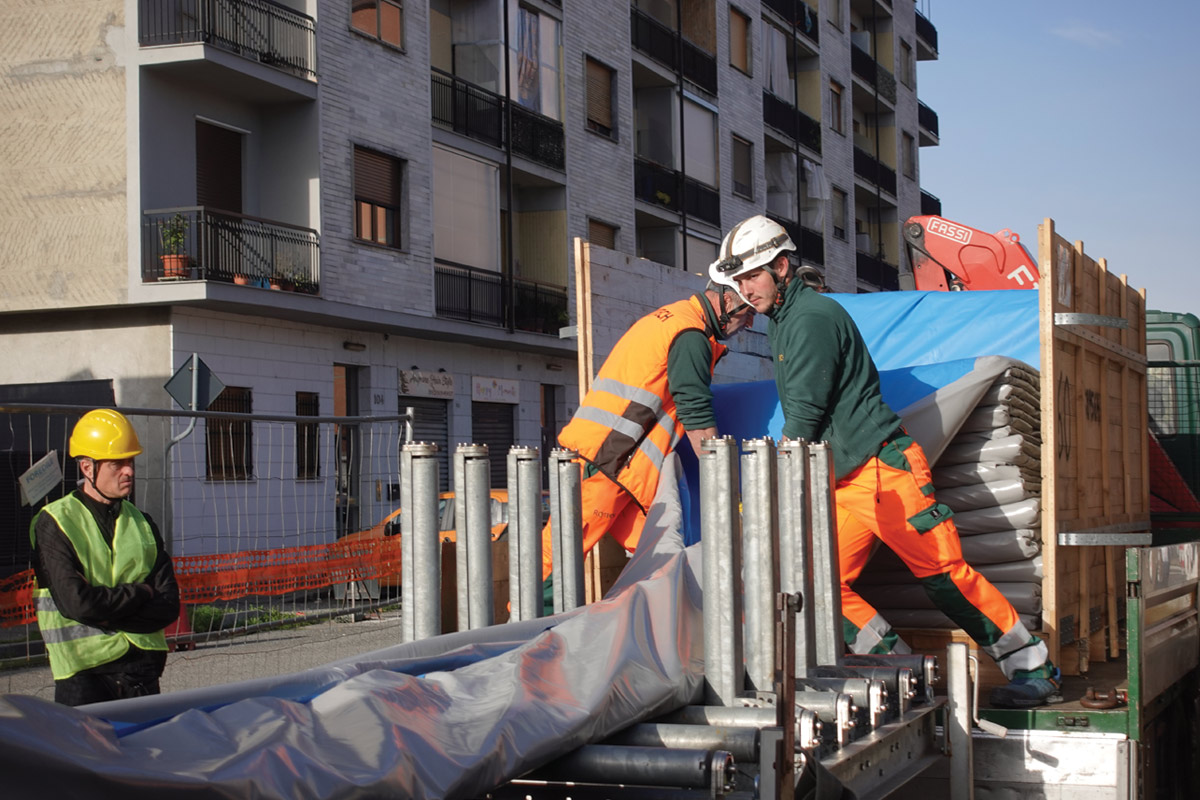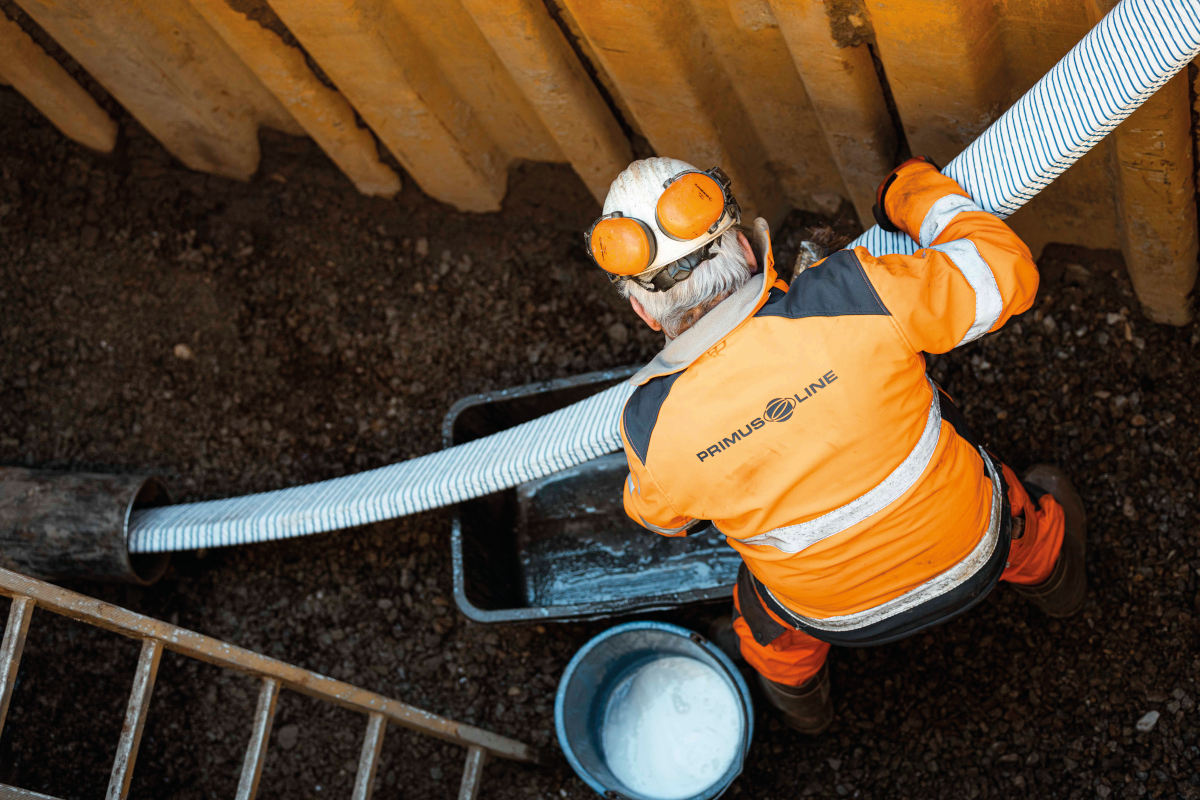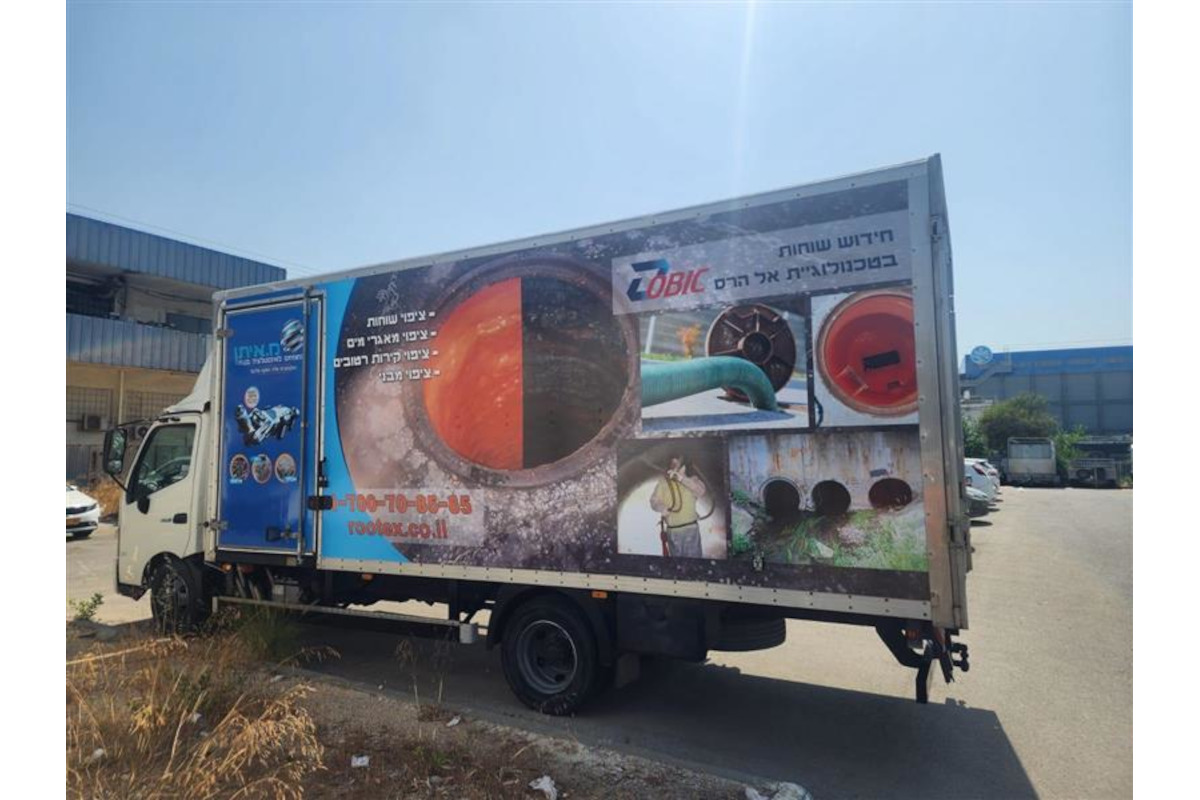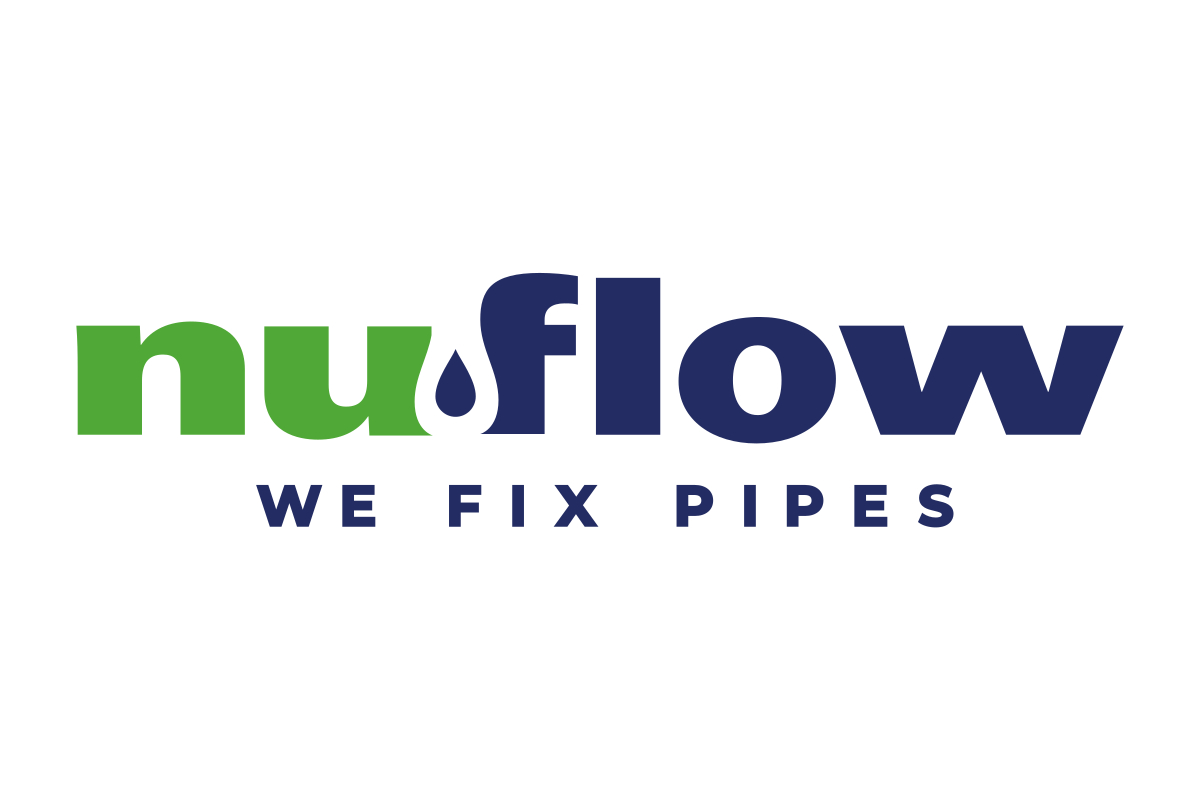Breaking New Ground

With the development of a patented steering technology called “Front Steer,” Bohrtec has for the first time overcome the application restrictions and enabled applications in very dense strata with SPT values > 35 and in moderately strong rock with strengths of up to 20 MPa. This is accomplished with the help of a guided auger boring system that excavates the ground as it advances. The expanded possibilities offered by this application does not affect the economic advantages of the pilot tube method – also known as guided boring – because the system with the Front Steer retains the advantages of quick and easy set-up of the equipment on site and simple operation.
Boring with the Front Steer
Just like the conventional ground displacing methods – the Front Steer system uses the proven optical guidance system consisting of theodolite with CCTV camera, monitor and LED target board. As shown in Figure 1, the ground/rock is continuously excavated by the cuttinghead and then transported to the starting shaft by augers with a hollow center for the optical path. The steering pipe uses the ground reaction force for steering. The machine operator can steer remotely by tilting the steering pipe in either manual or automatic mode and the control panel shows the respective steering position of the head.
Pipe Eating in Berlin

When the Berlin company Frisch & Faust, which already had different Bohrtec pilot drilling systems, received information about this project, it found this to be the perfect occasion to use the new guided auger boring method with Front Steer, which excavates the ground as it advances.
The company already had the BM 500 optical measuring system and the appropriate steel casings with hollow augers for the job. Only the Front Steer and the operation and control panel had to be provided. The six house connections on this length of sewer were diverted in advance. When doing this it was found to be necessary to remove the house connection branches before beginning the drilling works because they were all fixed to the old sewer with three metal clamps. Due to water pipes, gas pipes and electrical lines across the starting shaft the pit was supported with wood sheeting with a concrete thrust wall. One week before beginning of the drilling works the existing sewer was grouted.
After completion of all preliminary works, the Bohrtec team arrived with the Front Steer equipment and after a few hours had successfully drilled the first few meters. From the beginning, the crew had no difficulty controlling the steering head even with the different soil conditions, which included a sand/gravel bed below the old pipe, stone bedding and soils of the classes LBM 2/LBM 3, as well as the grout in the old line. These challenges, however, did not lead to any problems with regard to the soil clearing or steering.

After two days, 54 m of casing were driven without incident. Although the installation of the steel casings could have been completed on this second day, work was stopped short before reaching the target shaft in order to demonstrate the Front Steer driving into the target shaft and to explain the operation to owner representatives the next morning. After reaching the target shaft, the steering head was uncoupled and the team started to push in the 300-mm clay jacking pipes.

Breaking New Ground
Inspired by the successful use of the Front Steer on the Misdroyer Street project, Frisch & Faust prepared an alternative proposal for the Berliner Strasse/Treskow Allee project. An existing 200-mm clay sewer pipe had been in operation for several years but because of further development an additional connection to main sewer became necessary.
One section of this replacement sewer, which passed beneath the rails of a tramway, was planned to be performed in trenchless construction while open trench was intended for the installation of the rest of the pipe run. The original plan involved leaving the abandoned and backfilled sewer in the ground since laying the new pipe on the same alignment would not have been possible without disturbing the rails.
As an alternative proposal, Frisch & Faust proposed the on-line replacement of the existing sewer by pipe eating with the Front Steer system. The essential advantage of this proposal was the fact that the risk of meeting unknown obstacles was minimized by following the existing line.

Conclusion
Although the described projects of trenchless pipe replacement using the pipe eating method to remove the old line do not really represent the planned standard use of the new Front Steer system, it has proved to be effective for guided auger boring even under these extreme conditions.
With the development of the Front Steer system, Bohrtec has extended the range of application of the well proven and economical pilot tube technique successfully used for small diameters and short lengths into non-displaceable ground (SPT > 35) and rock with strengths of up to 20 MPa.
Dr.-Ing. Gregor Nieder is managing director at Bohrtec GmbH, Aldorf, Germany.




